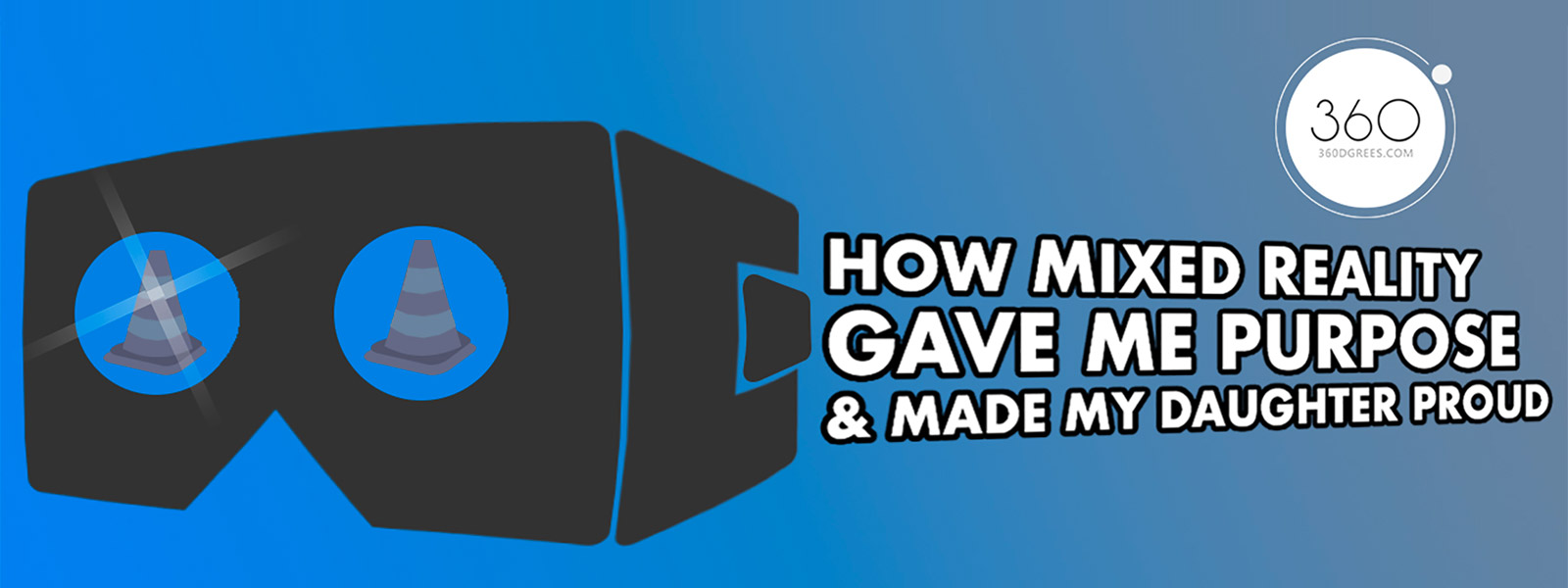Written by Toby Ellis, CEO at 360dgrees.com
I’ve worked in the Innovation and Technology sector for a few years now, but it was a simple yet really confronting question my 8-year-old daughter asked me at breakfast one morning that forced me to think about technology, what I do, why I do it and helped to pivot the focus of our entire organisation. I’ll get to her question in a minute…
I want you to think about training. Imagine safety training for a warehouse. There are 10 people in a room and none of them want to be there. They would all prefer to be back doing their jobs. They’re working from a folder and in that folder, is a question. That question is “should you be looking at your personal device while walking across the warehouse floor where there are forklifts and PT’s operating?” Now, no-one gets that question wrong, but it doesn’t change behaviour because the second they leave that training room they’re all on their mobile phones.
 Now I want you to reimagine that training using our 360dgree.com platform. First, the participant puts on the Mixed Reality headset and is immediately immersed in the environment. They are in the warehouse. They take the point of view of the person walking across the warehouse when they hear an SMS and a phone appears at the bottom of their view. They look down to read the text and in that split second, they are hit by a forklift. Sounds a bit rough right, but not nearly as rough as not getting home to your kids.
Now I want you to reimagine that training using our 360dgree.com platform. First, the participant puts on the Mixed Reality headset and is immediately immersed in the environment. They are in the warehouse. They take the point of view of the person walking across the warehouse when they hear an SMS and a phone appears at the bottom of their view. They look down to read the text and in that split second, they are hit by a forklift. Sounds a bit rough right, but not nearly as rough as not getting home to your kids.
Did you know, that in Australia at the end of August 115 people had died as a result of workplace accidents and that that number is higher than the corresponding period last year? Workplace accidents cripple people financially. A global number of cost is touted at $6bil but the impact on individual families is devastating. You see the problem is, traditional safety training produces poor real participation rates, low knowledge retention and is done in abstraction of consequence.
Our Mixed Reality Training Platform creates immersive, interactive, gamified training experiences that makes it impossible to not be present and engaged during the training. We turn training into a game where you make decisions and learn by doing not by reading and data tells us that when you learn by doing you can lift knowledge retention from 5% to 75%. When you experience consequence, you get to feel the outcomes of your decisions and that’s what drives behavioural change.
 You become the forklift driver, the nurse, the student, the teacher. You’re not doing the training, you’re in the training. Actively participating, making decisions and experiencing the outcomes of those decisions.
You become the forklift driver, the nurse, the student, the teacher. You’re not doing the training, you’re in the training. Actively participating, making decisions and experiencing the outcomes of those decisions.
If safety and training are important to your organisation and you aren’t taking advantage of Mixed reality technology then please reach out to us today as we have a platform that can help you tomorrow.
Now, back to that question my little girl asked. Matilda said “Daddy, how do you make your money?” At the time, my answer was “Ï help people see things differently using technology.” It was a cool answer but it lacked purpose. I wanted more purpose. My parents are teachers, my wife’s a teacher, my brothers served in the navy, I have cousins in the police force and friends who are nurses. I wanted more purpose in my work. I didn’t like my answer so I sought to change it. Now, our platform is making a real difference to businesses and communities. The next time my kids ask me how I make my money I am able to say, “Daddy helps people go back to their families the same way they went to work: Safe.”


